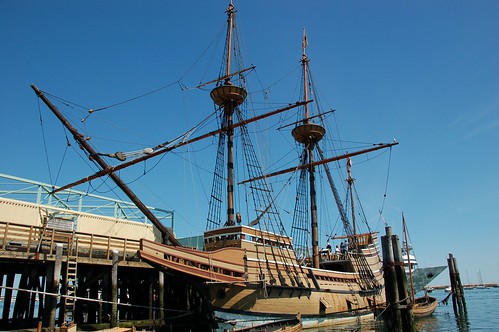
Since late winter, my friend Kati and I have been trying to plan a quick canoe trip. Like most canoe trips, even though it was just the two of us, it took a little finagling to sync up our schedules. Last week, we managed to carve out a sliver of time for a two day canoe trip and decided to tackle the Granite River Route. Kati’d paddled the route once during her three seasons as a canoe guide at Wilderness Canoe Base and I’d flirted with the route (aka a day trip to Sag Falls and another day trip to Clove Lake via Larch Creek) but had never paddled it in full.
DAY 1
14:25 – Kati rolls into Tuscarora. We quickly transfer all of her personal items into the gear pack that Andy and I threw together the night before.
14:50 – Depart Tuscarora for the Cross River Bridge on the North Gunflint Lake Road.
15:05 – Load the canoe and paddle off.

We pass through the Gunflint Narrows into Magnetic Lake, but go through too quickly to really get a look at the trestle remnants hiding under the water from the old railroad bridge that spanned Gunflint Lake in the late 1800s. In Magnetic Lake, we pass our second historical highlight – the Swiss Chalet style cabin on Gallagher’s Island. This unique cabin was built in the 1920s by the Gallagher family and it’s been carefully maintained ever since. Because it’s a private residence, we didn’t want to paddle right next to it, so our pictures don’t show how very cute it is, even from a distance.

16:00 – Turn the corner and officially enter the Boundary Waters (although we missed the sign) and the Granite River. Reach our first portage of the day and spot the first of countless international border markers dotting the route. About 9 inches of rain had fallen on the Gunflint Trail in the last few weeks, so the portages are a little sloppy and/or flooded.

16:40 – After another short portage, (and a slight bushwhacking stint) we arrive at the base of Little Rock Falls and snap some photos. Nourished from a quick handful of GORP, we soldier on. Thankfully, in June you have about 18 hours of daylight to paddle in each day, so we have plenty of time to set up camp yet.

17:15 – Arrive Wood Horse portage. There are moccasin flowers, false lily of the valley, and other spring wildflowers everywhere!

18:15 – We paddle by the Granite River’s first campsite, near where the Pine River flows in. The site is up on a high rock face and is uninhabited. We decide to press on and see if there are any open sites on Clove Lake. Halfway down the portage, we see that the campsite across the lake is occupied and hear voices coming from the other campsite near the portage. Neither of us had any desire to camp in the campsite on the far side of the lake (it has a great beach, but is a buggy site this time of year), so we turn around.
19:00 – Return to Pine River campsite. Unload gear. Grab pots and pans and paddle to the widest part of the river to fill up on water.
19:10 – I set up stove in the Pine River campsite, put water on to boil for supper. Kati scopes out tent pads.
19:20 – Water boils. Stir in red beans and rice mix with slices of bratwurst. Turn pot down to a simmer. Attempt to figure out how to set up Andy’s “Big Agnes” 2-person tent.

19:40 – Test supper. Done! Take off heat, put water on to boil for dishes and to put in Nalgene bottles to cool over night for drinking the next morning. Return to tent pad to stake out tent.
19:45 – Dinner is served.
20:00 – Clean up campsite, tuck canoe behind trees for the night. Enjoy a spectacular sunset.

21:10 – Turn in for the night
DAY 2

Wake up to very noisy chickadees singing in the trees above our tent. Based on the light coming into the tent, figure it must be around 7 a.m. Go back to sleep.
07:10 – Decide to get going. Both shocked to discover that it’s only 7. Head out to the fire grate to put on water for oatmeal and tea.
08:00 – Enjoy a leisurely breakfast in the sunshine on the rock face overlooking the glass-calm Granite River. Realize that in a string of rainy, cold days we’ve somehow won the weather lottery for our short trip.
08:30 – Start packing up the campsite. We pause to take a lot of photos around the site, especially of the trio of moccasin flowers blooming towards the back of the site.

09:20 – Slather on sunscreen and don ridiculous sun hats. Paddle to Clove Lake portage.
09:30 – Start the Clove Lake portage for the second time in as many days. Over breakfast, we decided against single portaging and I have a much happier portage than the night before. While I run back for the food pack, Kati stays at the Clove Lake side of the portage and repacks the gear pack so it rests better on her back so she can have happier portages for the rest of the day too.
10:20 – Paddle across Clove Lake. Both the southern campsites are full. This proves to be the most people we see all day.
11ish – Arrive at portage. Quickly discover that the first half of the 40 rod portage is ankle deep in squelching, boot swallowing muck, aka loon sh!t. We persevere and treat ourselves with several handfuls of GORP and big drinks of water at the portage’s end.

11:40 – Push off again and enjoy a quiet paddle through an especially scenic portion of the river. After the mucky state of the last portage, neither of us is any big rush to make it to “Swamp Portage.”
12:00 – Arrive Swamp Portage. Not as bad as we had feared. A little buggy, sure, and the end of the portage is basically a river, but we spy tadpoles and frogs swimming in the portage pools and beautiful marsh marigold foliage frames the portage boardwalk.

12:25 – Feeling, to quote Winnie-the-Pooh, a little “11 o’clockish,” we decide to press on to Gneiss Lake before breaking for lunch. This means two more portages and a tricky bit of current stand between us a summer sausage and cheese sandwich lunch.
12:40 – Reach Granite River portage. Warmed by the first sunlight we’ve had in week, dragonfly nymphs are hatching near the portage landings. Bad news for mosquitoes – good news for campers!

13:00 – Around the corner from the portage, we navigate through the one bit of real current on the Granite River that you don’t portage around. We head for the deep center of the river and are merrily whisked down the river. Wheee!! Like going down a waterside! In the widening in the river after the current, we spy a pair of loons – the one creature Kati was hoping to see on the trip.
13:40 – We finish the Gneiss Lake portage and start looking for a campsite to eat lunch at on Gneiss Lake. The primo campsite on the island is taken and its residents are fishing nearby, so we settle on lunch on the rock face of the most northern campsite on the lake.

14:20 – We pack up lunch and start making our way towards Devil’s Elbow and Marabouef Lake. We still haven’t decided if we’re going to camp on the Granite River or on one of the island sites on Saganaga near Sag Falls. We have to meet a towboat at Sag Falls at noon the next day, so making it to Sag means a quiet, slow morning tomorrow, but two more portages today. On the other hand, it feels pretty good to think that all the day’s portaging is already behind us.
We make our way slowly through the Devil’s Elbow and Marabouef Lake, swinging by each campsite to check it out.
15:50 – Find ourselves at the northern most peninsula with campsites on Marabouef Lake. Figure we can be on Sag by 6, but opt instead to camp on the last campsite on Marabouef, a north facing site tucked into a quiet bay.
16:40 – Do a water run, start boiling water and setting up camp.
18:20 – Enjoy a fine camp dinner of Pesto Pasta Primavera with Salmon. We don’t feel like bothering with a fire, so we just break s’more ingredients into our chocolate pudding and call that good enough.

19:00 – Clean up campsite. We cool off our Nalgenes filled with boiled water by putting them on a stringer and floating them in the lake. We take a gander at the map and try to determine when we need to depart the campsite the next morning to make it to Sag Falls by noon.

21:00 – Bedtime.
DAY 3
07:00 – Wake up. Slower start than the day before. No need to boil water, since we just need cold water to mix into our granola and neither of us are coffee drinkers.
08:00 – Start taking down the campsite.
09:15 – Depart campsite. The wind’s picked up and we have to paddle hard to turn the corner into the southerly wind. Once we’re headed the right direction though, the wind pushes us up the river towards our final destination. We stop paddling for a minute and realize that with the wind, we could reach Sag Falls in time for our pick up, even without paddling another stroke. Dark storm clouds start to gather and thunder rumbles in the background. We notice taller trees where the Sag Corridor Fire of 1995 burned the river.
10:10 – Reach Horsetail Rapids portage. Pull on rain pants and jacket. Start portage.
10:15 – Downpour starts.
10:20 – Downpour ends. I’m now hanging out on the base of lone cedar tree in the middle of calf deep water with the canoe on my shoulders. There’s a 30 ft. section of calf deep water covering the portage trail to the canoe landing on the other side of the portage. I can’t see how deep the water is and I really don’t want to slip in the water or onto the steep rock face next to the water with a Kevlar canoe on my shoulders. We opt to take the canoe off and two man it through the deep water.

10:50 – Depart Horsetail Rapids portage. Count our blessings that we decided to camp on Marabouef the night before instead of attempting to make it all the way out to Sag. Better to deal with flooded portages first thing in the day.
11:10 – Arrive Sag Falls portage.

11:30 – Canoe and all gear at the tow boat pick up point on the Sag Lake side the Falls. Have snack. Wait for towboat.

12:00 – Jack arrives in the towboat.

12:40 – Reach public landing on Sag Lake Trail. It’s Friday and the landing is full of people loading up their boats to get to their cabins on the Canadian side of Sag.
13:10 – Arrive Tuscarora. Unpack Kati’s items. Rouge thunderstorm rolls in. Mark up Granite River map with all the insight we’ve gained from the trip. Start planning next year’s trip.









































